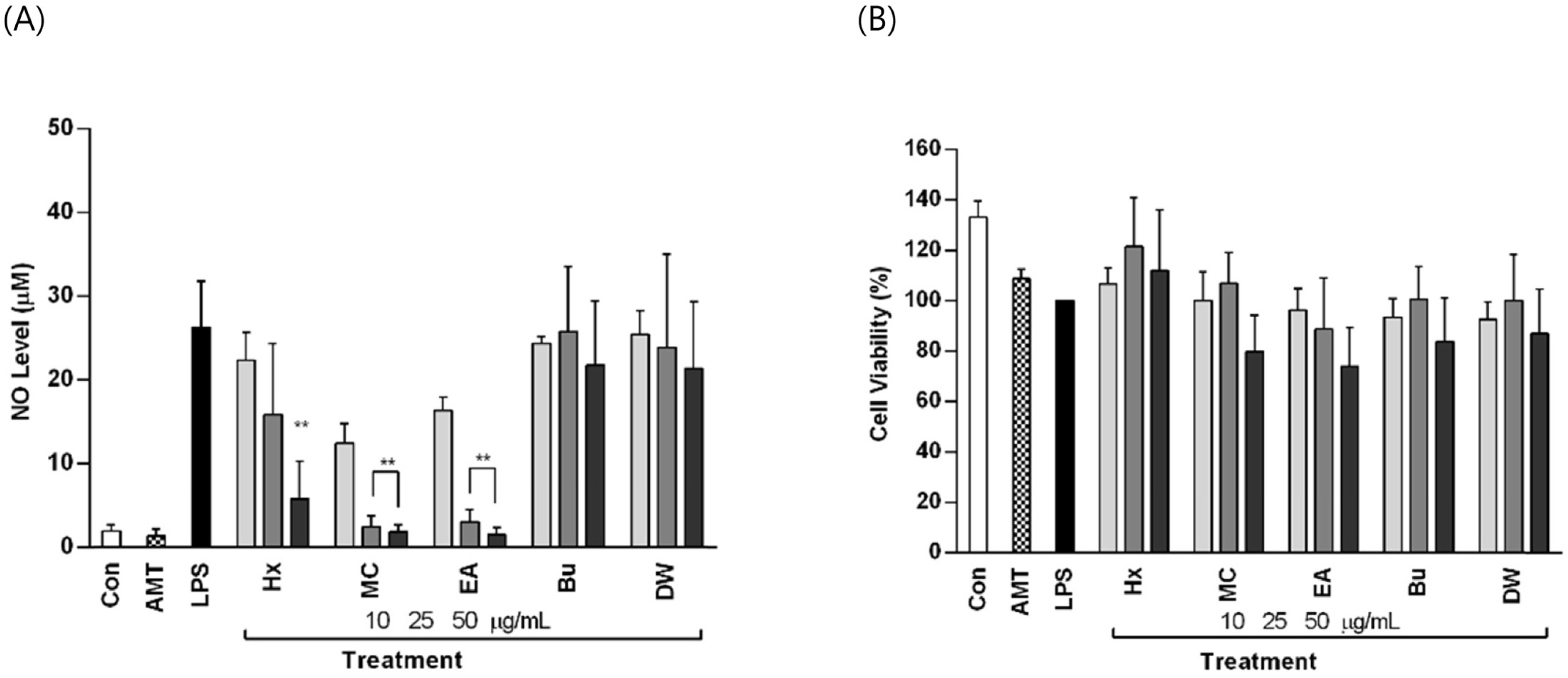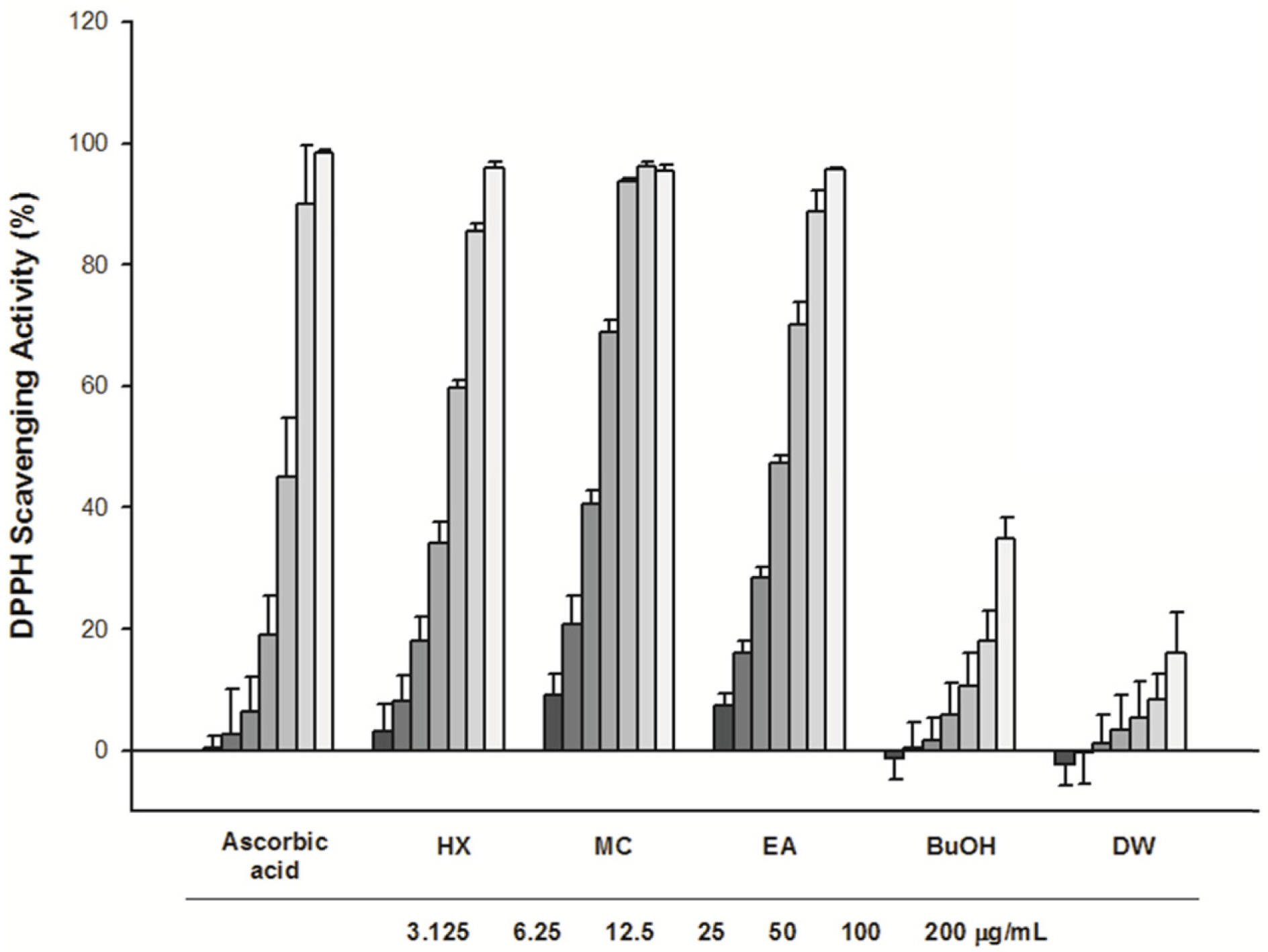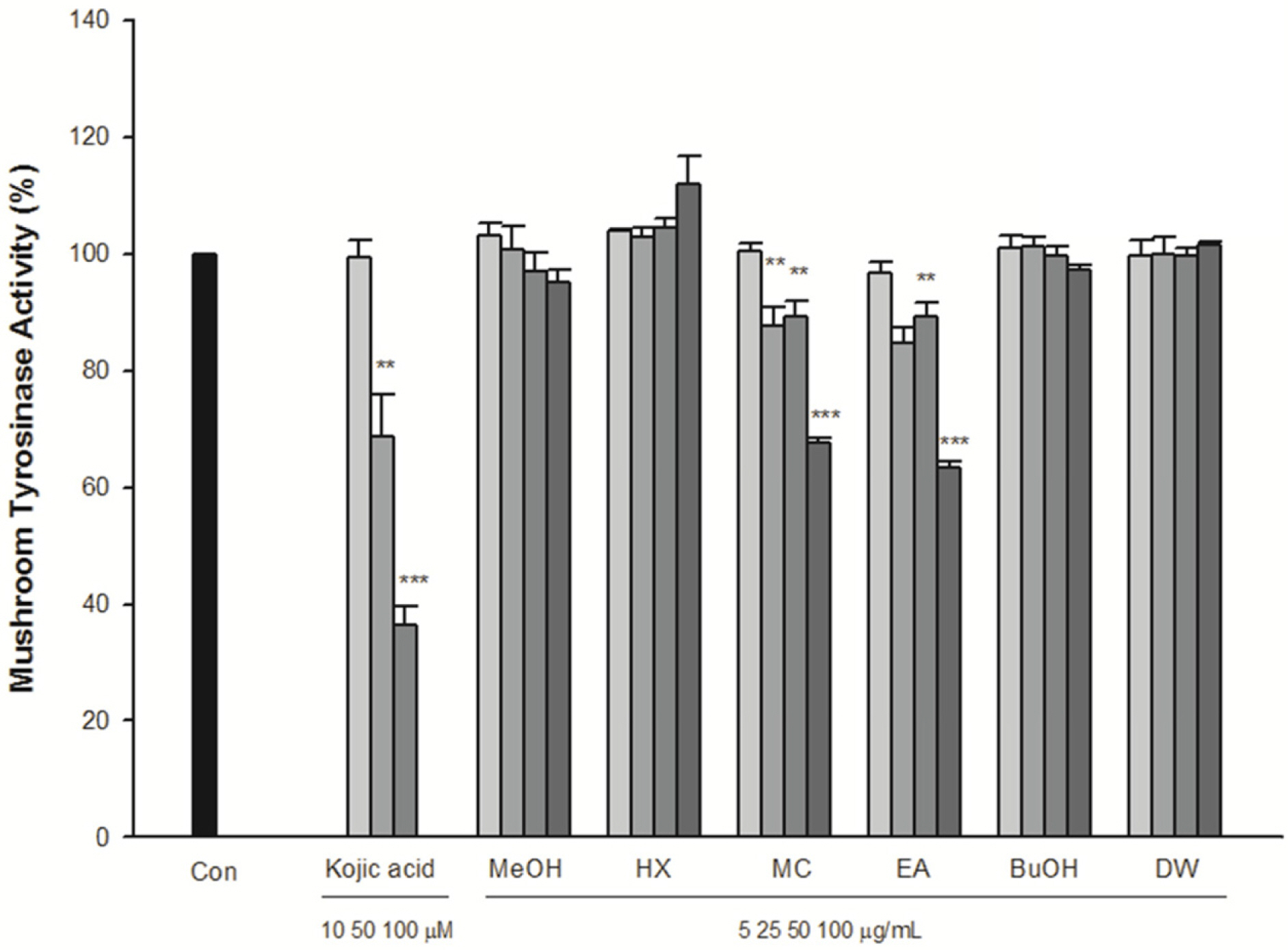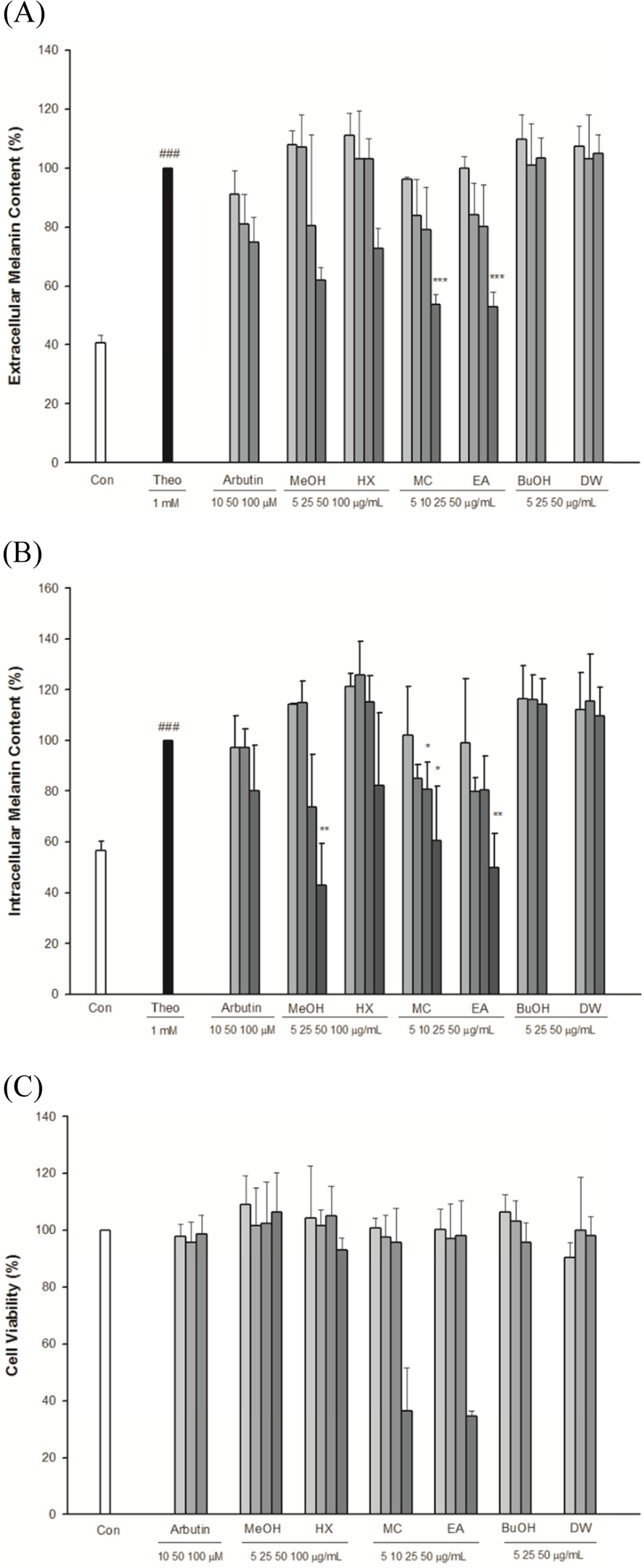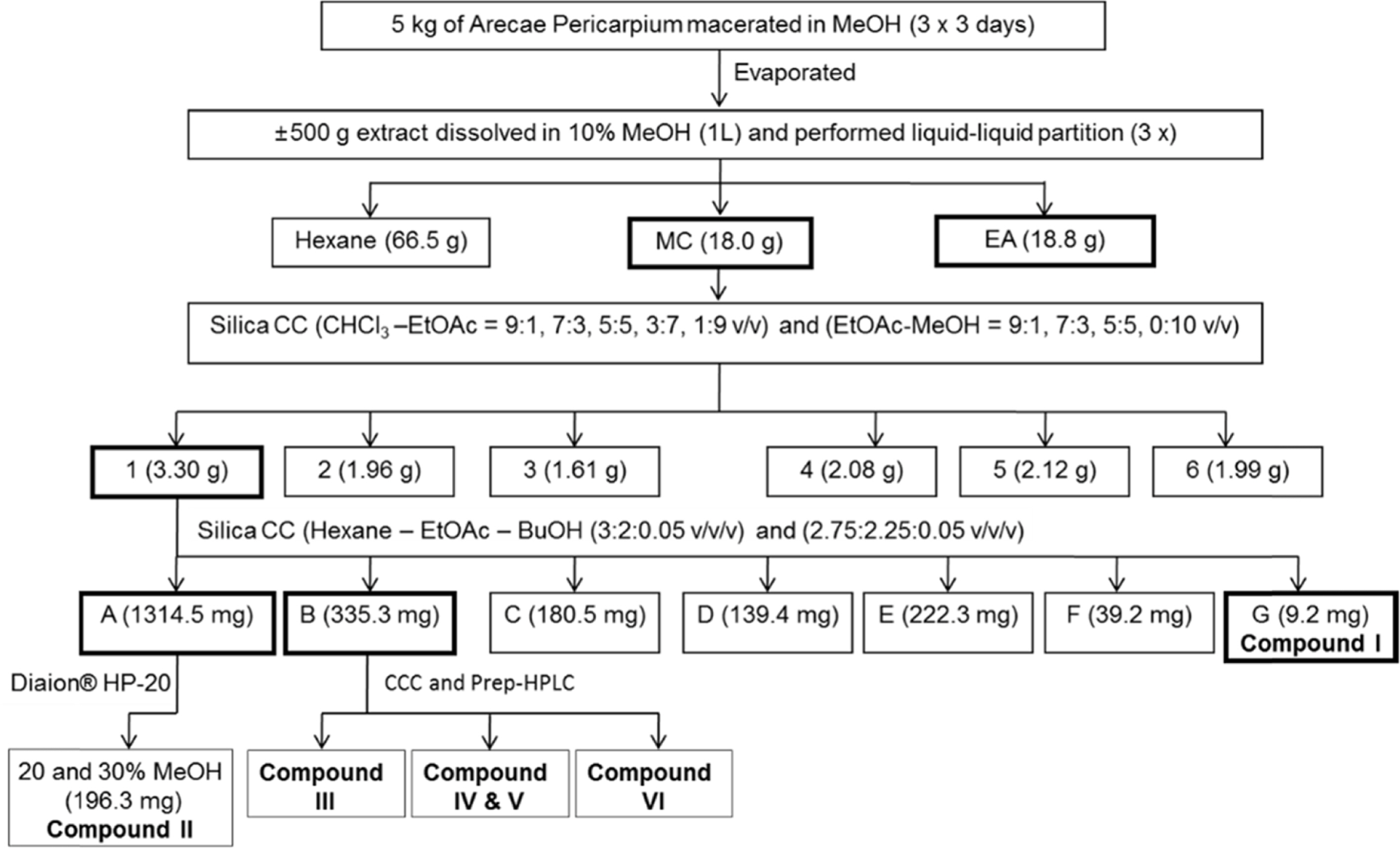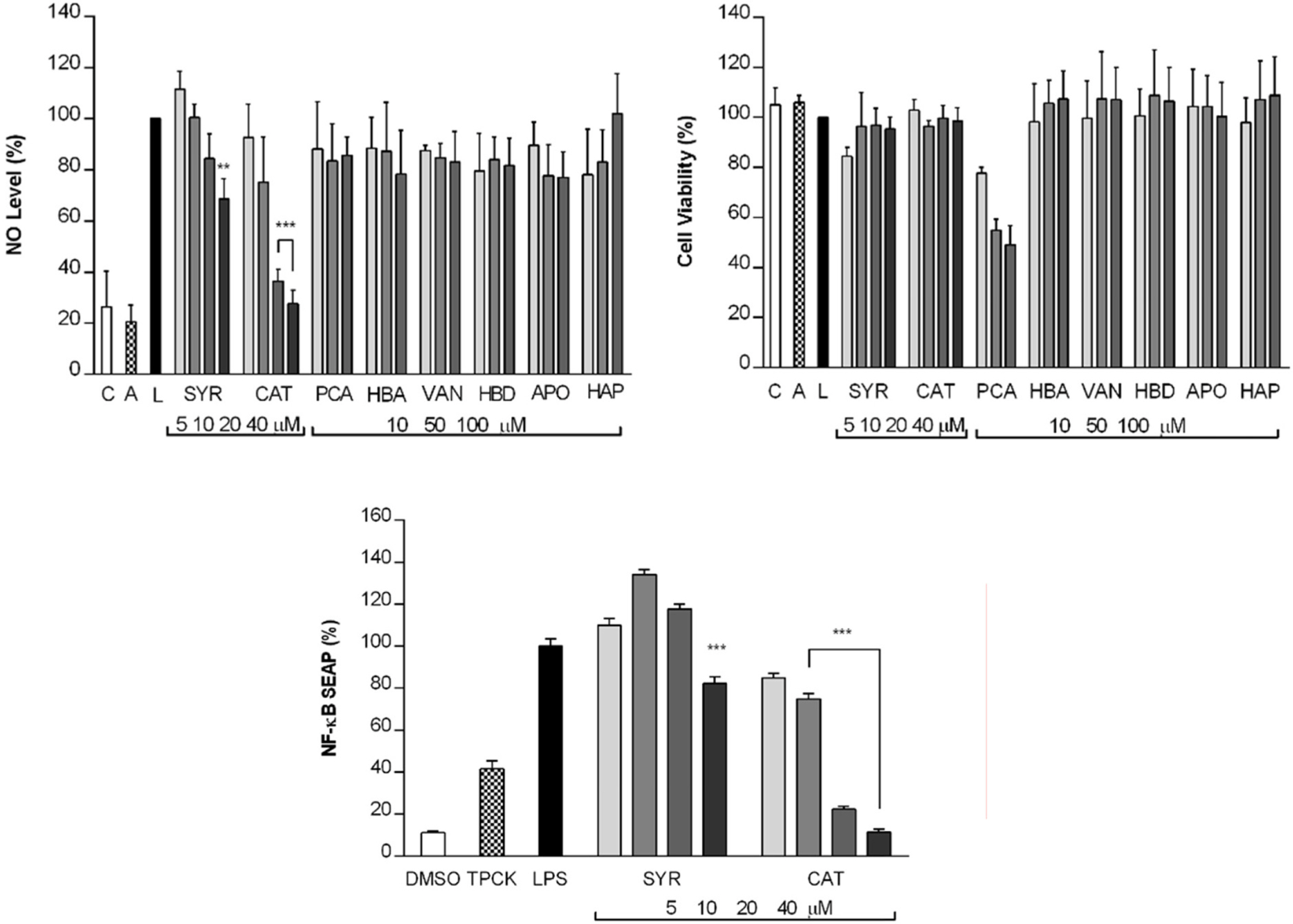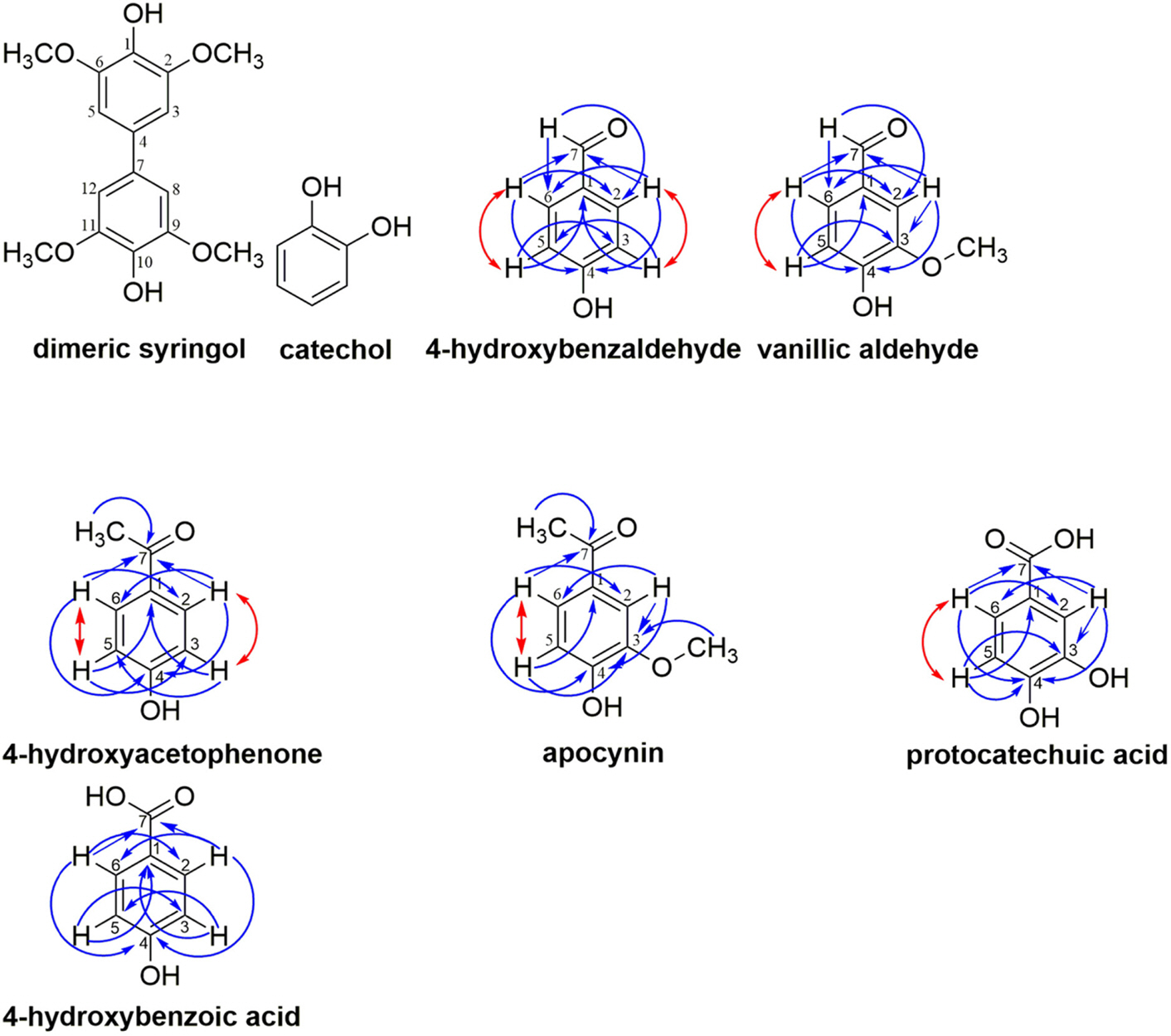Nat Prod Sci.
2016 Sep;22(3):193-200. 10.20307/nps.2016.22.3.193.
Bioassay-Guided Isolation and Identification of Compounds from Arecae Pericarpium with Anti-inflammatory, Anti-oxidative, and Melanogenesis Inhibition Activities
- Affiliations
-
- 1College of Pharmacy and Natural Products Research Institute, Seoul National University, Gwanak-ro 1, Gwanak-gu, Seoul 08826, Republic of Korea. kims@snu.ac.kr
- KMID: 2355145
- DOI: http://doi.org/10.20307/nps.2016.22.3.193
Abstract
- This study describes the anti-inflammatory, anti-oxidant, and melanogenesis inhibition activities of methanol extract and various organic solvent fractions of Arecae Pericarpium. We examined the inhibition of lipopolysaccharide (LPS)-induced nitric oxide (NO) production in RAW 264.7 cells, 1,1-diphenyl-2-picrylhydrazine (DPPH) scavenging activity, mushroom tyrosinase inhibition activity and melanin contents. The study showed that, among all tested fractions, methylene chloride fraction showed the strongest inhibition of LPS-induced NO production in RAW 264.7 cells (ICâ‚…â‚€ value 8.89 µg/mL) and DPPH radical scavenging activity (ECâ‚…â‚€ value 21.39 µg/mL). Methylene chloride and ethyl acetate fractions similarly inhibited mushroom tyrosinase activity. Methanol extract exhibited strongest reduction of melanin content in B16F10 melanoma cells. Based on the bioactivity assay results, methylene chloride and ethyl acetate fractions were further separated. Eight phenolic compounds were isolated, which are dimeric syringol (1), catechol (2), 4-hydroxybenzaldehyde (3), vanillin (4), 4-hydroxyacetophenone (5), apocynin (6), protocatechuic acid (7) and 4-hydroxybenzoic acid (8). Among the isolated compounds tested, catechol showed the strongest inhibition of LPS-induced NO production in RAW 264.7 cells. Catechol also showed the concentration-dependent NF-κB inhibition activity. Arecae Pericarpium might have potentials to be developed as anti-inflammatory agent or dermatological product for skin-whitening agent.
Keyword
MeSH Terms
Figure
Reference
-
(1). Peng W., Liu Y. J., Wu N., Sun T., He X. Y., Gao Y. X., Wu C. J. J.Ethnopharmacol. 2015; 164:340–356.(2). Yenjit P., Issarakraisila M., Intana W., Chantrapromma Kan. Postharvest Biol Technol. 2010; 55:129–132.(3). Phaechamud T., Toprasri P., Chinpaisal C.Pharm. Biol. 2009; 47:242–247.(4). Zamora R., Vodovotz Y., Billiar T. R.Mol Med. 2000; 6:347–373.(5). Korhonen R., Lahti A., Kankaanranta H., Moilanen E.Curr. Drug Targets Inflamm. Allergy. 2005; 4:471–479.(6). Sun J., Zhang X., Broderick M., Fein H.Sensors. 2003; 3:276–284.(7). Kim Y. J., Uyama H.Cell Mol. Life Sci. 2005; 62:1707–1723.(8). Briganti S., Camera E., Picardo M.Pigment Cell Res. 2003; 16:101–110.(9). Lee K. K., Choi J. D. J.Cosmet. Sci. 1998; 49:351–359.(10). Moon K. Y., Hahn B. S., Lee J., Kim Y. S.Anal. Biochem. 2001; 292:17–21.(11). Prieto J. M.Procedure: Preparation of DPPH Radical, and antioxidant scavenging assay. 2012; https://www.researchgate.net/file. as of Jan. 10, 2016.(12). Zhang W. M., Li B., Han L., Zhang H. D. Afr. J.Biotechnol. 2009; 8:3887–3892.(13). Tsukamoto K., Jackson I. J., Urabe K., Montague P. M., Hearing V. J.EMBO J. 1992; 11:519–526.
- Full Text Links
- Actions
-
Cited
- CITED
-
- Close
- Share
- Similar articles
-
- Anti-inflammatory Constituents from Artemisia iwayomogi Kitamura: A Bioassay-guided Fractionation Study
- Phenolic Compounds from the Leaves of Stewartia pseudocamellia Maxim. and their Whitening Activities
- Bioassay-coupled LC-QTOF MS/MS to Characterize Constituents Inhibiting Nitric Oxide Production of Thuja orientalis
- Isolation of Quercetin and Isorhamnetin Derivatives and Evaluation of Anti-microbial and Anti-inflammatory Activities of Persicaria glabra
- Comparison of antioxidant, alpha-glucosidase inhibition and anti-inflammatory activities of the leaf and root extracts of Smilax china L.

